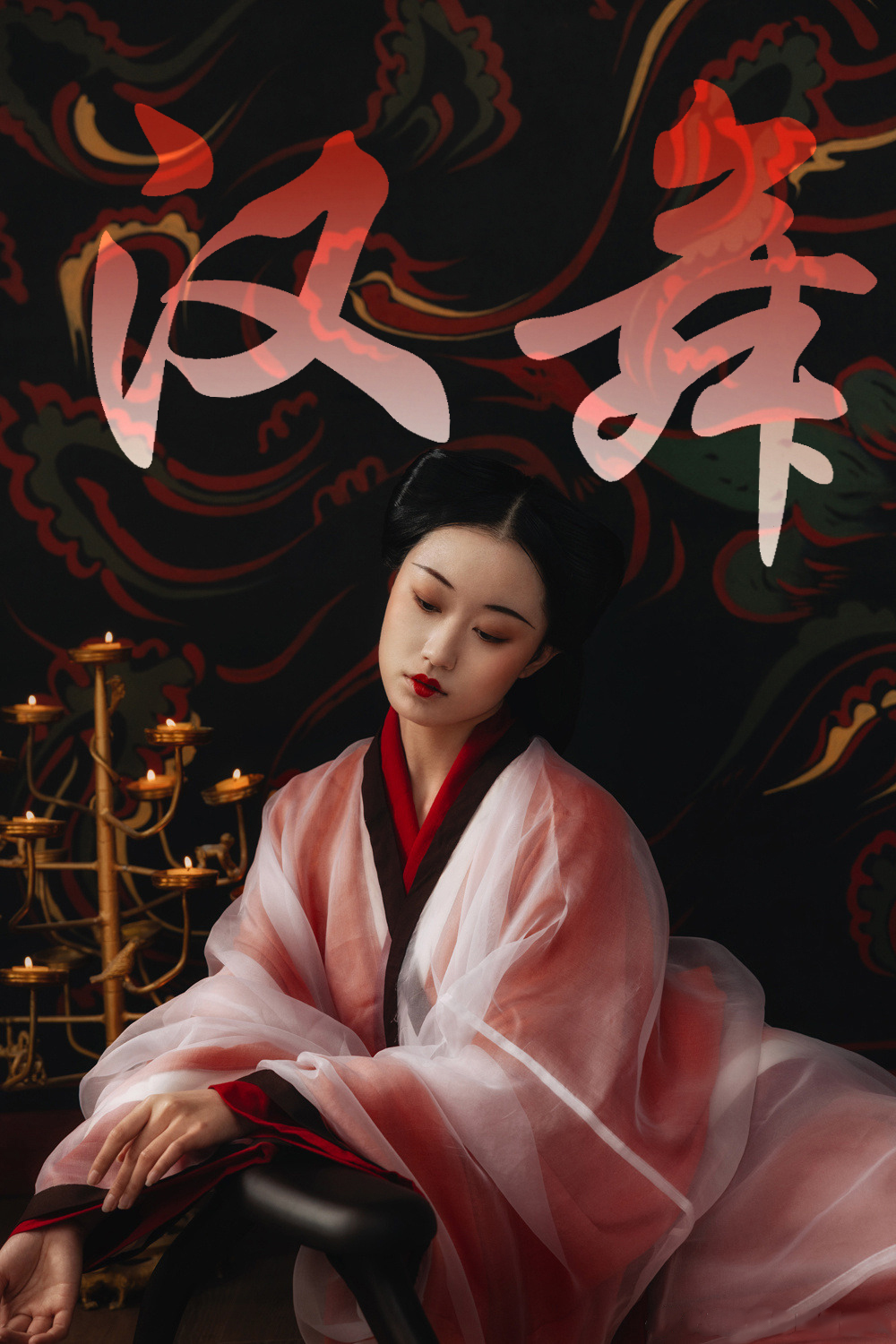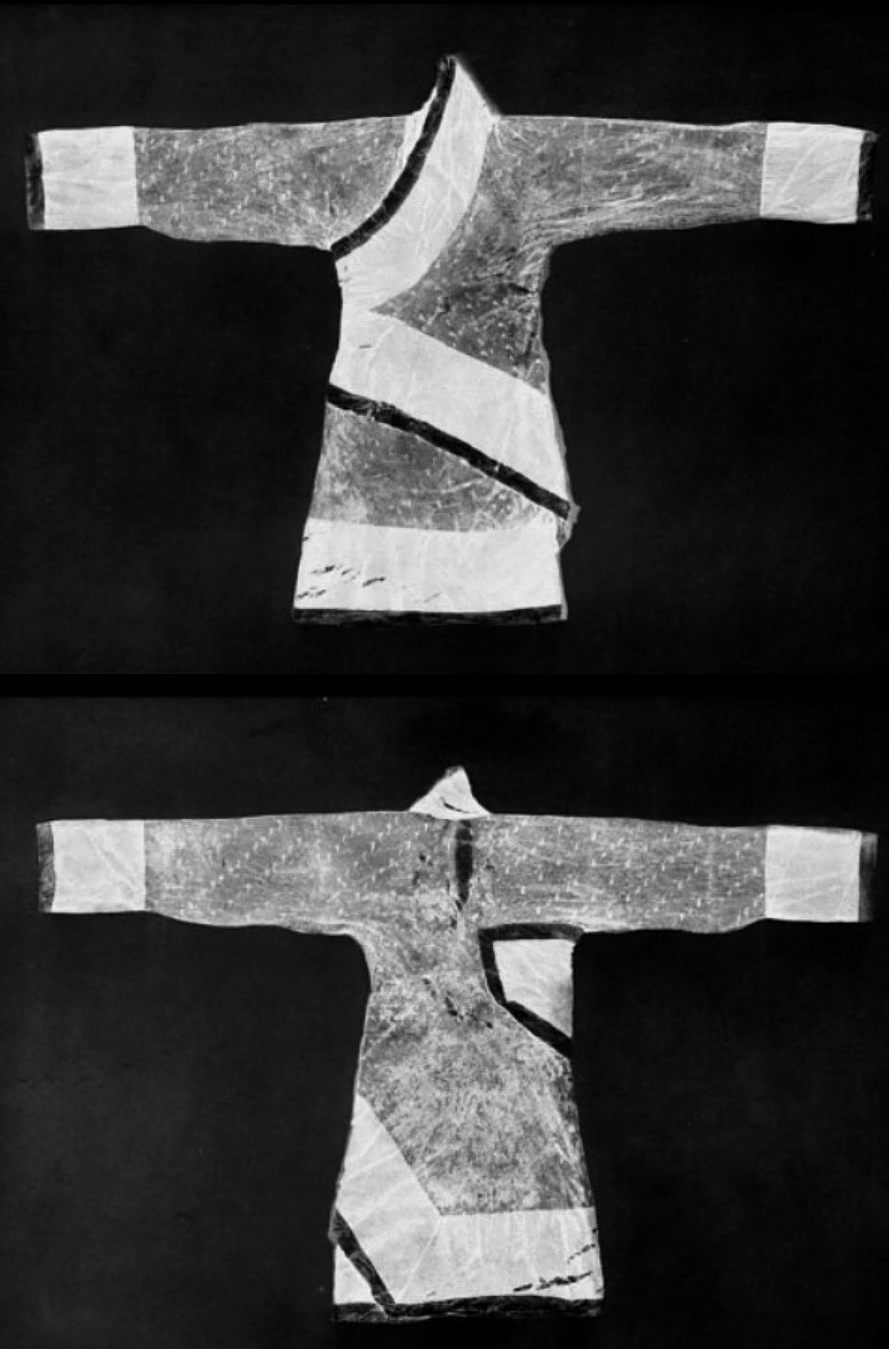Han Dynasty Dancer: 汉女舞家
Model: 尔七七七七
Stylist: 仰望的花鼻子
Photographer: Realyn
Hanfu Provider: 山涧服饰
Above: a modern recreation of the type of Qū jū 曲裾 dress. Qū jū 曲裾 largely wrapped around the woman's body while being secured by the tight belt around her waist.
Music: 神人畅 Enchanter's Song.
A Han dynasty lady dancer. She wears a long vermillion Quju skirt-robe. This type of clothing were popular from the Warring States period and continued throughout the Han dynasty. The silk dress of the lady is based on the robes recovered from Mawangdui Tomb Complex dated to Eastern Han. During this era, high ladies often wore translucent robes over their Quju robes.
The 曲裾袍 Qū jū dress robe, páo means "Robe" and "Quju" means "Curved Robe" or "Curved Gown" Quju are like narrow wide- sleeved robes with one side of the robed lapel extended far enough to form a triagonal flap that wraps around the wearer's back. There are no clasps on the robe itself to fasten it in place so the robe is often paired with a belt to secure it in place. The morning glory- like coil of the robe's triangular fold usually marks the wearer as someone of means because Qujus often take up a good deal of more materials (than the standard straight collared robes) to make.
UNISEX VERSIONS
Thank you to my Patrons who has contributed $10 and above: You made this happen!
➢ ☯ MK Celahir
➢ ☯ Muramasa
➢ ☯ Thomas Vieira
➢ ☯ Kevin
➢ ☯ Vincent Ho (FerrumFlos1st)
➢ ☯ BurenErdene Altankhuyag
➢ ☯ Stephen D Rynerson
➢ ☯ Michael Lam
➢ ☯ Peter Hellman
➢ ☯ SunB
.jpg)


.jpg)
.jpg)
.jpg)




.jpg)
.jpg)
.jpg)





Comments
So simply put, China simply don't have this frame of reference nor associated ancient tradition to stem this from. Remember that even the Hindu tradition of some of the earliest depiction of guardians flanking the Buddha are inspired by the Indo- Greek migrant's tradition of placing the nude Heraceles beside the Buddha. In a sense some of China's first semi- nude figures- the grimacing Buddhist heavenly guardians and Apsaras had their distance influences in Greeks.
https://dragonsarmory.blogspot.com/2020/03/a-han-dynasty-poem-about-enduring-love.html
Also these ones:
https://dragonsarmory.blogspot.com/2019/10/western-han-dynasty-ladys-fashion.html
https://dragonsarmory.blogspot.com/2019/10/eastern-han-dynasty-lady.html